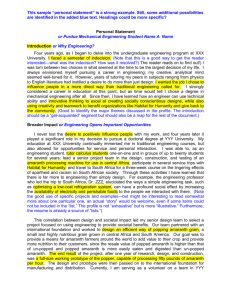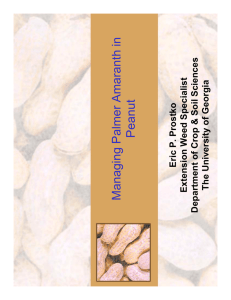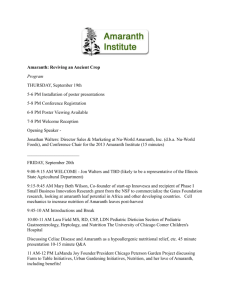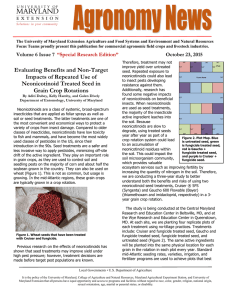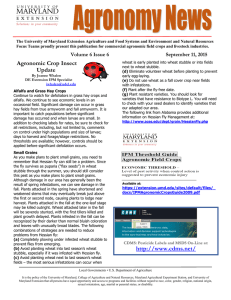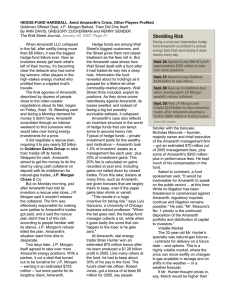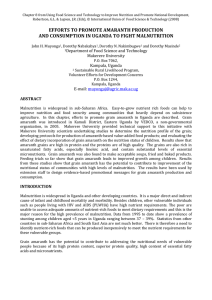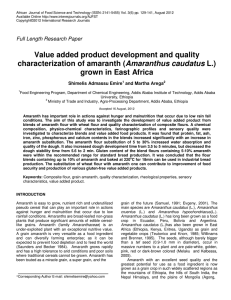Document 10669849
advertisement
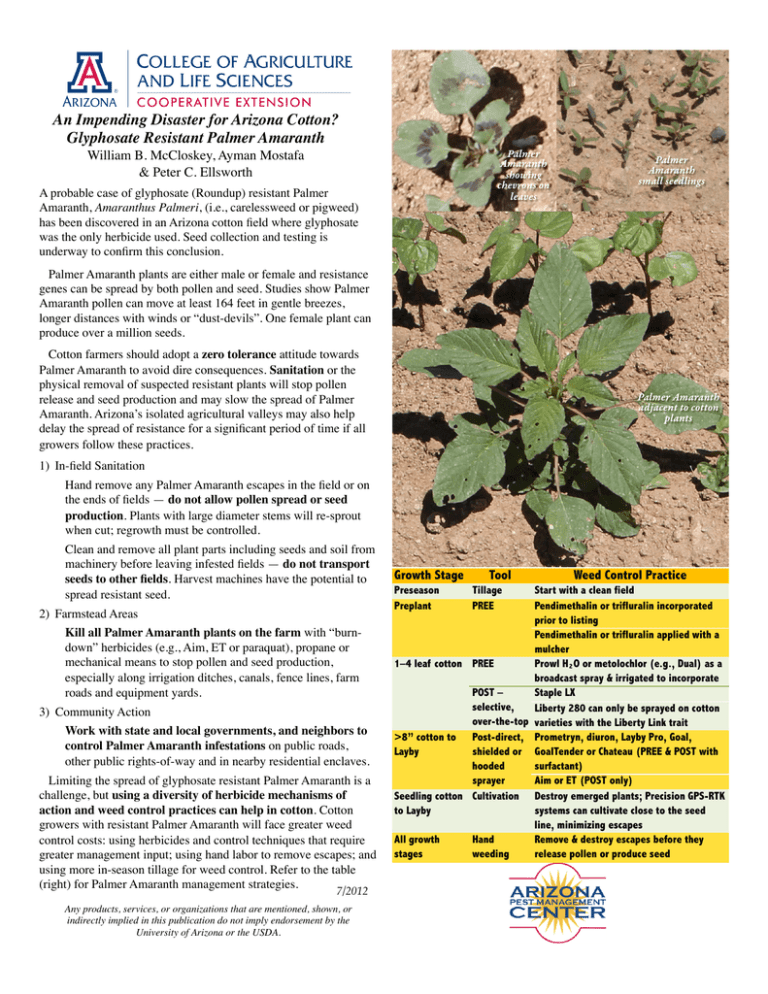
B An Impending Disaster for Arizona Cotton? Glyphosate Resistant Palmer Amaranth Palmer Amaranth showing chevrons on leaves William B. McCloskey, Ayman Mostafa & Peter C. Ellsworth A probable case of glyphosate (Roundup) resistant Palmer Amaranth, Amaranthus Palmeri, (i.e., carelessweed or pigweed) has been discovered in an Arizona cotton field where glyphosate was the only herbicide used. Seed collection and testing is underway to confirm this conclusion. Palmer Amaranth small seedlings Palm showin Palmer Amaranth plants are either male or female and resistance genes can be spread by both pollen and seed. Studies show Palmer Amaranth pollen can move at least 164 feet in gentle breezes, longer distances with winds or “dust-devils”. One female plant can produce over a million seeds. Cotton farmers should adopt a zero tolerance attitude towards Palmer Amaranth to avoid dire consequences. Sanitation or the physical removal of suspected resistant plants will stop pollen release and seed production and may slow the spread of Palmer Amaranth. Arizona’s isolated agricultural valleys may also help delay the spread of resistance for a significant period of time if all growers follow these practices. Palmer Amaranth adjacent to cotton plants 1) In-field Sanitation Hand remove any Palmer Amaranth escapes in the field or on the ends of fields — do not allow pollen spread or seed production. Plants with large diameter stems will re-sprout when cut; regrowth must be controlled. Clean and remove all plant parts including seeds and soil from machinery before leaving infested fields — do not transport seeds to other fields. Harvest machines have the potential to spread resistant seed. 2) Farmstead Areas Kill all Palmer Amaranth plants on the farm with “burndown” herbicides (e.g., Aim, ET or paraquat), propane or mechanical means to stop pollen and seed production, especially along irrigation ditches, canals, fence lines, farm roads and equipment yards. 3) Community Action Work with state and local governments, and neighbors to control Palmer Amaranth infestations on public roads, other public rights-of-way and in nearby residential enclaves. Limiting the spread of glyphosate resistant Palmer Amaranth is a challenge, but using a diversity of herbicide mechanisms of action and weed control practices can help in cotton. Cotton growers with resistant Palmer Amaranth will face greater weed control costs: using herbicides and control techniques that require greater management input; using hand labor to remove escapes; and using more in-season tillage for weed control. Refer to the table (right) for Palmer Amaranth management strategies. 7/2012! Any products, services, or organizations that are mentioned, shown, or indirectly implied in this publication do not imply endorsement by the University of Arizona or the USDA. Also s Growth Stage Preseason Preplant Tool Tillage PREE Weed Control Practice Start with a clean field Pendimethalin or trifluralin incorporated prior to listing Pendimethalin or trifluralin applied with a mulcher 1–4 leaf cotton PREE Prowl H 2 O or metolochlor (e.g., Dual) as a broadcast spray & irrigated to incorporate POST – Staple LX selective, Liberty 280 can only be sprayed on cotton over-the-top varieties with the Liberty Link trait >8” cotton to Post-direct, Prometryn, diuron, Layby Pro, Goal, Layby shielded or GoalTender or Chateau (PREE & POST with hooded surfactant) sprayer Aim or ET (POST only) Seedling cotton Cultivation Destroy emerged plants; Precision GPS-RTK to Layby systems can cultivate close to the seed line, minimizing escapes All growth Hand Remove & destroy escapes before they stages weeding release pollen or produce seed Banga Co Bond, AL ht Bryan Gl ht Culpe fo Ho Dohe Ro ht Holsh Am ht Marsh ht ro Scott Pi ht


